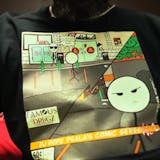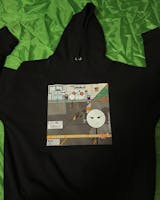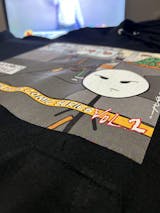DTF transfer is a widely used method in the printing industry and there are many printing methods in digital textiles. DTG printing is one of these methods and is often compared to DTF printing. However, the differences between both printing methods are often discussed. These differences can cause one to prevail over the other, depending on the uses and preferences. You can continue reading this content to learn about the differences between DTF transfer and digital printing.
Fastness
There are three types of garment fastness in the field of digital textile printing. These are dry rubbing fastness, washing fastness and wet rubbing fastness. DTF printing is different from the other, especially in terms of dry rubbing fastness. The fastness of this type of printing performs at a level of 4-4,5. In other printing, this level is usually above 4.
When we focus on wet rubbing fastness, we observe that DTF is usually at the level of 4. The wet rubbing fastness of DTG, another digital printing method, is usually 3-4. In other words, DTF has a better feature in terms of wet rubbing compared to DTG.
DTF printing is also more advantageous in terms of washing fastness. While the wash fastness in DTF is usually at the level of 4, it is usually at the level of 3-4 in DTG direct printing. This fastness level shows that DTF printing is more resistant to textile washing processes.
Product Applicability
In DTG and DTF printing processes, the use of pigments is possible on all types of garments. However, these two printing methods have different characteristics in the process of product applicability. It is necessary to use adhesives to bond the pigment powders to the garment fabric.
The heat transfer process used in the DTF printing method is suitable for all kinds of fabrics. On the other hand, the pigment ink used in the DTG printing method is not the most suitable option for polyester and low cotton fabrics. Therefore, the DTG method cannot show the same effective performance on all types of fabrics.
Comfort
With DTG printing, bright details stand out more when backlit. DTF transfer absorbs light and offers an opaque appearance. Especially in summer garments, the breathability of the fabric is an important factor affecting the comfort of clothing. DTG print leaves a breathable impression when applied to the fabric. However, DTF print has a non-breathable structure.
When it comes to comfort, DTG print is advantageous in light and breathable clothes preferred in summer. However, DTF printing is better for clothes such as sweatshirts, jackets or blouses preferred in winter. Because the non-breathable feature of the DTF printed part keeps warmer.
Color
DTF transfer and digital printing methods may have similar characteristics in terms of color. However, there are significant differences in their processes. Let's examine the differences between these printing methods together.
In DTG printing, white ink is first applied directly to the fabric. In DTF printing, the colored ink is first printed on the transfer film. In DTG, the white ink is absorbed by the fabric, while in DTF, the coating ink is not absorbed, so there is no color diffusion.
In other printing methods, white color is usually applied to the surface first, followed by colored ink. This process can affect the vibrancy of the colors and as a result, a bright appearance cannot be achieved. However, in DTF printing, powder is sprinkled after the ink is applied to achieve a bright color appearance. This process makes the colors in transfer printing appear more vibrant than DTG direct printing colors.









